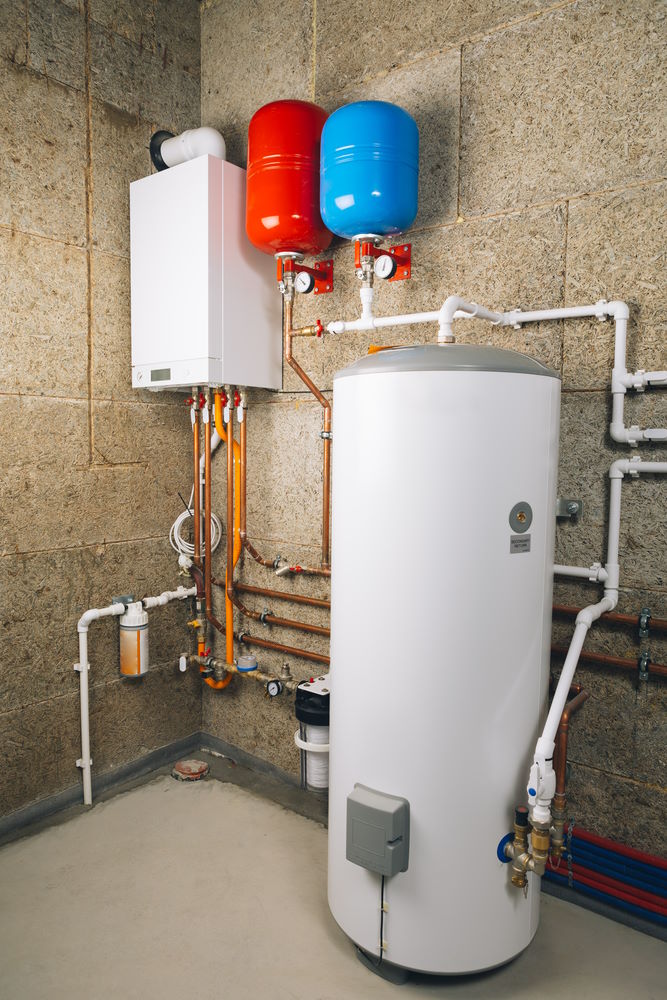 Water heaters are indispensable appliances in our homes, providing hot water for various daily tasks such as showering, cooking, and cleaning. However, like any other appliance, water heaters require regular maintenance to ensure optimal performance and longevity. Neglecting maintenance can lead to inefficiency, higher energy bills, and even costly repairs or premature replacement. In this comprehensive guide, we’ll explore essential tips and tricks for water heater maintenance to help you keep your unit running smoothly and efficiently. H3 Plumbing & Drains is Spartanburg’s top plumbing choice for your water heater maintenance and installation. Give us a call today if you need any assistance with your water heating needs.
Water heaters are indispensable appliances in our homes, providing hot water for various daily tasks such as showering, cooking, and cleaning. However, like any other appliance, water heaters require regular maintenance to ensure optimal performance and longevity. Neglecting maintenance can lead to inefficiency, higher energy bills, and even costly repairs or premature replacement. In this comprehensive guide, we’ll explore essential tips and tricks for water heater maintenance to help you keep your unit running smoothly and efficiently. H3 Plumbing & Drains is Spartanburg’s top plumbing choice for your water heater maintenance and installation. Give us a call today if you need any assistance with your water heating needs.
Understanding Your Water Heater:
Before diving into maintenance procedures, it’s crucial to understand the type of water heater you have. The two most common types are traditional tank water heaters and tankless water heaters. Traditional tank heaters store and heat water in a large tank, while tankless heaters heat water on demand as it flows through the unit. Each type has its maintenance requirements, so familiarize yourself with your water heater’s make and model.
Regular Inspection:
Regular inspections are key to identifying potential issues early on and preventing costly repairs. Here’s what to look for during an inspection:
- Check for Leaks: Inspect around the unit for any signs of water leakage. Even small leaks can indicate a problem with the tank or plumbing connections.
- Test Pressure Relief Valve: The pressure relief valve is a critical safety feature that releases excess pressure from the tank. Test it annually by lifting the valve’s lever to ensure it operates smoothly and releases water.
- Examine Pilot Light (For Gas Heaters): If you have a gas water heater, check the pilot light to ensure it’s lit and burning steadily. If the pilot light keeps going out, it may indicate a ventilation issue or a faulty thermocouple.
Flushing the Tank:
Over time, sediment and mineral deposits can accumulate at the bottom of the water heater tank, reducing its efficiency and potentially causing damage. Flushing the tank annually helps remove these deposits and prolongs the unit’s lifespan. Here’s how to flush your water heater:
- Turn Off the Power: For electric water heaters, switch off the power at the circuit breaker. For gas heaters, set the control knob to the “pilot” position.
- Shut Off the Water Supply: Locate the cold water inlet valve near the top of the tank and turn it off.
- Attach a Garden Hose: Connect a garden hose to the drain valve at the bottom of the tank and place the other end in a drain or outside.
- Drain the Tank: Open the drain valve and allow the water to flow out until it runs clear. Be cautious as the water may be hot.
- Flush the Tank: Once the water runs clear, turn on the cold water supply briefly to flush out any remaining sediment.
- Close the Drain Valve: Shut off the drain valve and disconnect the hose. Then, turn the water supply back on and restore power to the unit.
Insulating the Tank:
Insulating your water heater tank and pipes can help improve energy efficiency by reducing heat loss. This is particularly beneficial for older units or those located in unheated spaces such as the garage or basement. Insulation blankets are readily available at hardware stores and are easy to install. Simply wrap the blanket around the tank and secure it with tape or straps, making sure not to cover the thermostat or controls. Additionally, insulate exposed hot water pipes to minimize heat loss during distribution.
Adjusting the Temperature:
Lowering the temperature setting on your water heater can save energy and reduce the risk of scalding injuries, especially if you have young children or elderly family members. The recommended temperature setting is typically around 120 degrees Fahrenheit (49 degrees Celsius). Use a thermometer to measure the water temperature at the tap and adjust the thermostat accordingly.
Testing the Anode Rod:
The anode rod is a sacrificial component that helps prevent corrosion inside the water heater tank by attracting corrosive elements. Over time, the anode rod can become depleted and require replacement. Inspect the rod annually by removing it from the tank (located at the top) and checking for signs of corrosion or deterioration. If the rod is significantly worn down, it’s time to replace it with a new one to protect your tank from rust and extend its lifespan.
Professional Maintenance:
While many water heater maintenance tasks can be performed by homeowners, certain procedures are best left to professionals. It’s recommended to schedule a professional inspection and maintenance service at least once a year. A licensed plumber at H3 Plumbing and Drains can perform a thorough inspection, identify any potential issues, and perform tasks such as checking gas connections, testing electrical components, and ensuring proper ventilation.
Proper maintenance is essential for keeping your water heater operating efficiently and prolonging its lifespan. By following the tips and tricks outlined in this guide, you can prevent costly repairs, improve energy efficiency, and ensure a reliable supply of hot water for your home. Remember to perform regular inspections, flush the tank annually, adjust the temperature settings, and schedule professional maintenance when needed. With these preventative measures in place, you can enjoy the benefits of a well-maintained water heater for years to come.
